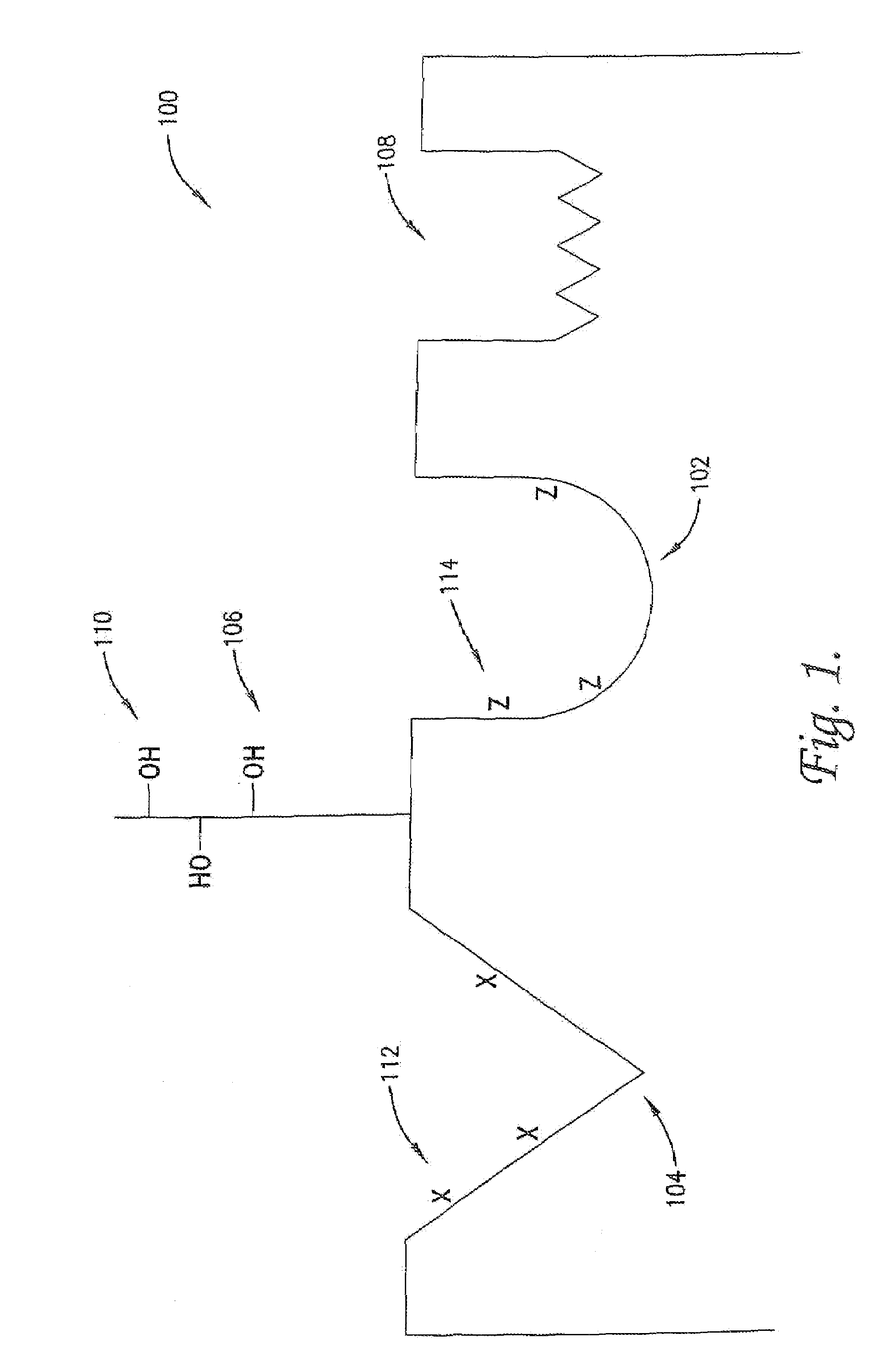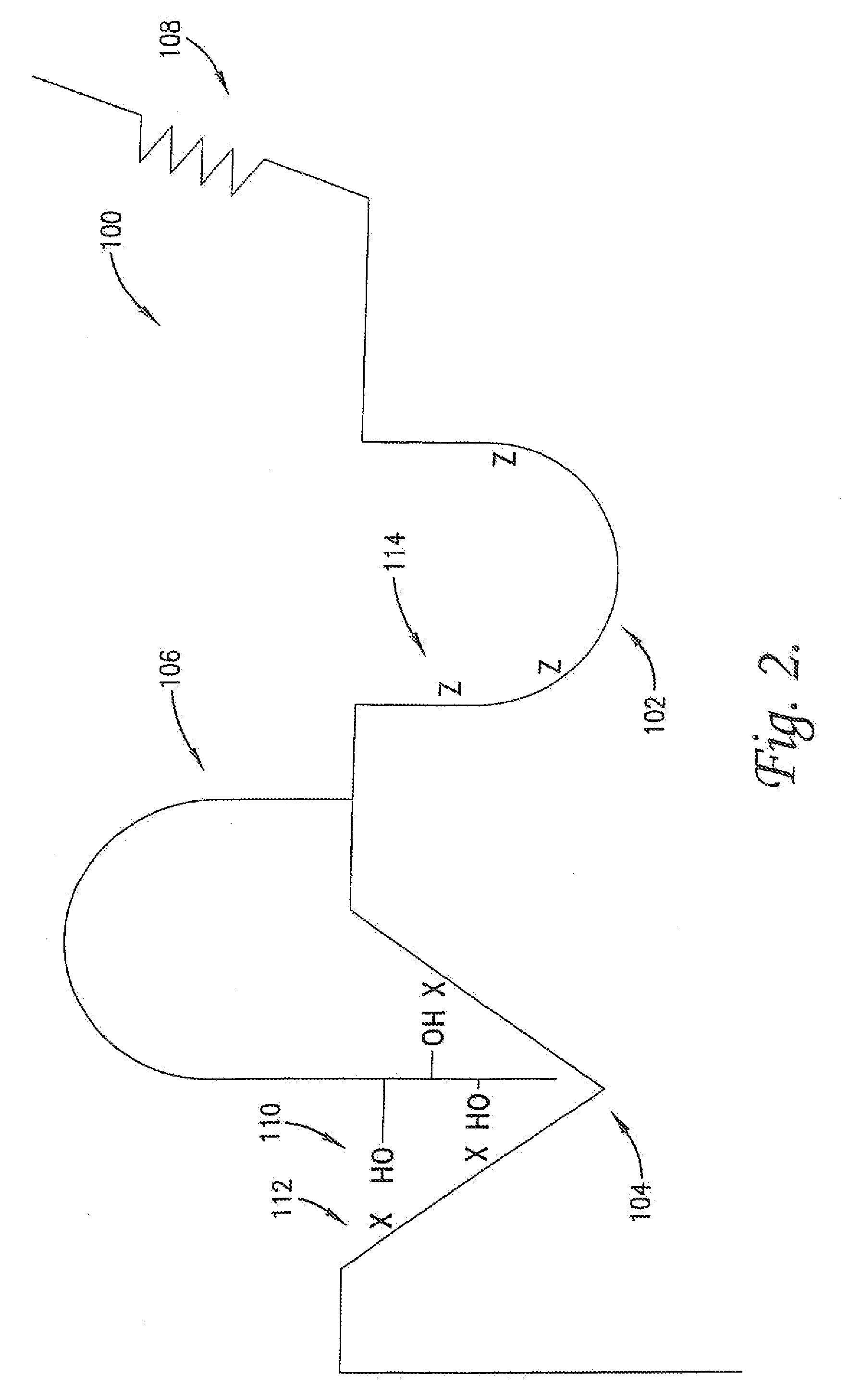Modulation of protein functionalities
a protein and functional technology, applied in the field of protein functionalities, can solve the problems of lack of selectivity, insufficient therapeutic windows to achieve maximum efficacy, and the method and strategy by which the pharmaceutical industry sets about developing small molecule therapeutics has not significantly advanced, and achieves the effect of modulating the activity of proteins
- Summary
- Abstract
- Description
- Claims
- Application Information
AI Technical Summary
Benefits of technology
Problems solved by technology
Method used
Image
Examples
example a
[0170]
[0171]To a solution (200 mL) of m-amino benzoic acid (200 g, 1.46 mol) in concentrated HCl was added an aqueous solution (250 mL) of NaNO2 (102 g, 1.46 mol) at 0° C. The reaction mixture was stirred for 1 h and a solution of SnCl2.2H2O (662 g, 2.92 mol) in concentrated HCl (2 L) was then added at 0° C., and the reaction stirred for an additional 2 h at RT. The precipitate was filtered and washed with ethanol and ether to yield 3-hydrazino-benzoic acid hydrochloride as a white solid.
[0172]The crude material from the previous reaction (200 g, 1.06 mol) and 4,4-dimethyl-3-oxo-pentanenitrile (146 g, 1.167 mol) in ethanol (2 L) were heated to reflux overnight. The reaction solution was evaporated in vacuo and the residue purified by column chromatography to yield ethyl 3-(3-tert-butyl-5-amino-1H-pyrazol-1-yl)benzoate (Example A, 116 g, 40%) as a white solid together with 3-(5-amino-3-tert-butyl-1H-pyrazol-1-yl)benzoic acid (93 g, 36%). 1H NMR (DMSO-d6): 8.09 (s, 1H), 8.05 (brd, J=8...
example b
[0173]
[0174]To a solution of 1-naphthyl isocyanate (9.42 g, 55.7 mmol) and pyridine (44 mL) in THF (100 mL) was added a solution of Example A (8.0 g, 27.9 mmol) in THF (200 mL) at 0° C. The mixture was stirred at RT for 1 h, heated until all solids were dissolved, stirred at RT for an additional 3 h and quenched with H2O (200 mL). The precipitate was filtered, washed with dilute HCl and H2O, and dried in vacuo to yield ethyl 3-[3-t-butyl-5-(3-naphthalen-1-yl)ureido)-1H-pyrazol-1-yl]benzoate(12.0 g, 95%) as a white power. 1H NMR (DMSO-d6): 9.00 (s, 1H), 8.83 (s, 1 H), 8.25 7.42 (m, 11 H), 6.42 (s, 1 H), 4.30 (q, J=7.2 Hz, 2 H), 1.26 (s, 9 H), 1.06 (t, J=7.2 Hz, 3 H); MS (ESI) m / z: 457.10 (M+H+).
example c
[0175]
[0176]To a solution of Example A (10.7 g, 70.0 mmol) in a mixture of pyridine (56 mL) and THF (30 mL) was added a solution of 4-nitrophenyl 4-chlorophenylcarbamate (10 g, 34.8 mmol) in THF (150 mL) at 0° C. The mixture was stirred at RT for 1 h and heated until all solids were dissolved, and stirred at RT for an additional 3 h. H2O (200 mL) and CH2Cl2 (200 mL) were added, the aqueous phase separated and extracted with CH2Cl2 (2×100 mL). The combined organic layers were washed with 1N NaOH, and 0.1N HCl, saturated brine and dried over anhydrous Na2SO4. The solvent was removed in vacuo to yield ethyl 3-{3-tert-butyl-5-[3-(4-chlorophenyl)ureido]-1H-pyrazol-1-yl}benzoate (8.0 g, 52%). 1H NMR DMSO- d6): δ 9.11 (s, 1H), 8.47 (s, 1H), 8.06 (m, 1H), 7.93 (d, J=7.6 Hz, 1H), 7.81 (d, J=8.0 Hz, 1H), 7.65 (dd, J=8.0, 7.6 Hz, 1H), 7.43 (d, J=8.8 Hz, 2H), 7.30 (d, J=8.8 Hz, 2H), 6.34 (s, 1H), 4.30 (q, J=6.8 Hz, 2H), 1.27 (s, 9H), 1.25 (t, J=6.8 Hz, 3H); MS (ESI) m / z: 441 (M++H).
PUM
 Login to View More
Login to View More Abstract
Description
Claims
Application Information
 Login to View More
Login to View More - R&D
- Intellectual Property
- Life Sciences
- Materials
- Tech Scout
- Unparalleled Data Quality
- Higher Quality Content
- 60% Fewer Hallucinations
Browse by: Latest US Patents, China's latest patents, Technical Efficacy Thesaurus, Application Domain, Technology Topic, Popular Technical Reports.
© 2025 PatSnap. All rights reserved.Legal|Privacy policy|Modern Slavery Act Transparency Statement|Sitemap|About US| Contact US: help@patsnap.com



